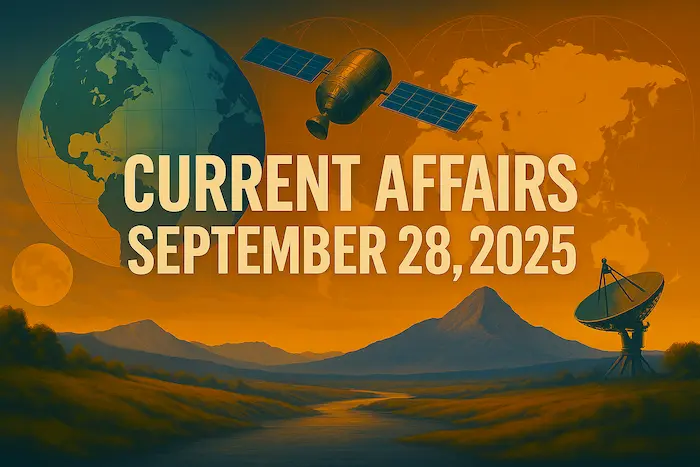1. Ishwar Chandra Vidyasagar (1820–1891) – History & Culture
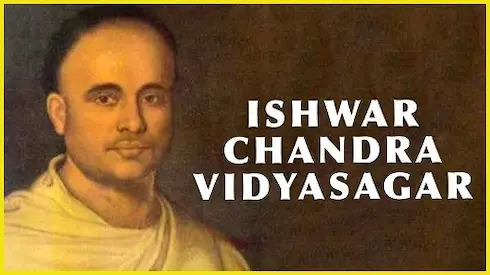
Why in News?
On the occasion of his birth anniversary on 26th September, the Union Home Minister paid tribute to Ishwar Chandra Vidyasagar, recognizing his monumental role as a Bengali social reformer, educator, and advocate for women’s rights and educational reforms in 19th-century India.
About Ishwar Chandra Vidyasagar
Basic Details
- Born: 26 September 1820, Birsingha, West Bengal
- Died: 29 July 1891, Kolkata
- Title: “Vidyasagar” (Ocean of Knowledge) – awarded for his unmatched scholarship
- Legacy: Pioneered major reforms in education, social justice, and Bengali literature
Key Contributions
1. Educational Reforms
- Modernized Bengali prose and script – made it simpler and accessible to common people
- Authored “Borno Porichoy”, a foundational book for Bengali language learners
- Advocated for non-Brahmins’ admission to Sanskrit College, breaking caste barriers
- Promoted teacher training and universal education
2. Women’s Rights and Social Reform
- Key architect of Hindu Widows’ Remarriage Act, 1856 – supported widow remarriage amidst societal opposition
- Strongly opposed child marriage and polygamy
- Promoted women’s education – served as secretary of Hindu Female School, later Bethune School, one of India’s first women’s colleges
3. Philanthropic Work
- Founded schools for girls and adults in underdeveloped areas like Santhal Parganas (present-day Jharkhand)
- Set up a free homeopathy clinic for the poor
4. Language and Literature
- Widely regarded as the Father of Modern Bengali Prose
- Writings made Bengali literature democratic and people-centric
Exam Connect – Possible Questions
Prelims
1. Ishwar Chandra Vidyasagar was instrumental in the passage of which important social legislation?
A. Child Marriage Restraint Act, 1929
B. Hindu Widows’ Remarriage Act, 1856
C. Sati Regulation Act, 1829
D. Widow Pension Act, 1881
Answer: B. Hindu Widows’ Remarriage Act, 1856
2. Why was Ishwar Chandra conferred the title ‘Vidyasagar’?
A. For his contribution to Sanskrit grammar
B. For his resistance to British colonialism
C. For his extensive knowledge and scholarship
D. For writing India’s first women-centric novel
Answer: C. For his extensive knowledge and scholarship
Mains
1. Ishwar Chandra Vidyasagar is often remembered as a reformer ahead of his time. Discuss his contributions to women’s rights and education in colonial India. (150 words)
2. Examine the role of regional reformers like Ishwar Chandra Vidyasagar in shaping modern Indian society. How did their efforts intersect with the national freedom movement? (250 words)
2. IAF Restructures Fighter Fleet After MiG-21 Retirement – Defence & Security
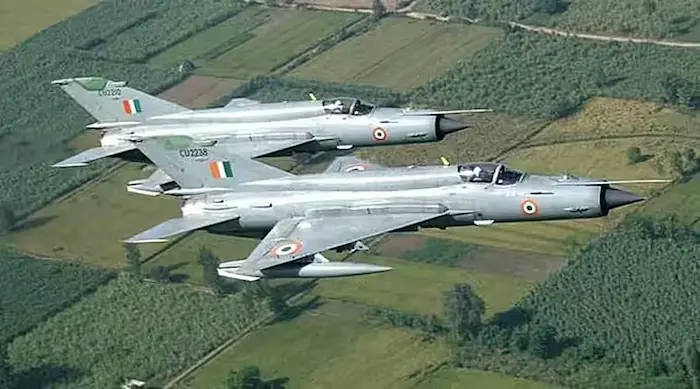
Why in News?
On 26th September, the Indian Air Force (IAF) officially retired the last two squadrons of the MiG-21 fighter jets, concluding their six-decade-long service. This marks the end of a historic era while simultaneously raising concerns about India’s current fighter squadron strength and future air defence readiness.
MiG-21: A Historic Journey
- Induction: First inducted in 1963, the MiG-21 was the IAF’s first supersonic fighter.
- Operational Role:
- Played crucial roles in 1965, 1971, and Kargil Wars.
- Over 700 MiG-21s of various versions were inducted.
- Safety Record:
- Over 500 crashes, resulting in 170 pilot deaths.
- Despite criticism, many veterans defend the aircraft’s longevity and affordability.
Fighter Squadron Shortfall
- Post-Retirement Strength: IAF now operates only 29 fighter squadrons, compared to the sanctioned 42.
- Comparative Threat:
- Pakistan: ~20–25 squadrons
- China: Over 60 squadrons
- This gap presents a strategic vulnerability, especially in a two-front conflict scenario.
Current Strategy to Address Air Defence Gaps
1. Indigenous Aircraft Development
- Tejas Mk1: Currently 2 squadrons in operation.
- Tejas Mk1A:
- Upgraded version with AESA radar, electronic warfare systems.
- IAF plans to induct 180 units, but deliveries are delayed.
2. Global Fighter Procurement
- Plan to acquire 114 fighter jets through global tender.
- Dassault Rafale (France) is a leading contender.
- Emphasis on domestic manufacturing under Atmanirbhar Bharat initiative.
- 3. Advanced Air Defence Systems
- Induction of:
- S-400 Triumf (Russia): Long-range mobile air defence system
- Akashteer (India): Integrated command-and-control system
- Aim: Strengthen India’s airspace surveillance and missile interception capability.
Exam Connect – Possible Questions
Prelims
1. Which of the following statements about the MiG-21 fighter aircraft is correct?
A. It was developed indigenously by HAL in the 1980s
B. It played no role in the 1971 Indo-Pak War
C. It was India’s first supersonic fighter jet
D. It was retired in 2005
Answer: C. It was India’s first supersonic fighter jet
2. The Indian Air Force aims to maintain how many sanctioned fighter squadrons for full operational readiness?
A. 24
B. 29
C. 35
D. 42
Answer: D. 42
Mains
1. The retirement of the MiG-21 marks both a milestone and a challenge for the Indian Air Force. Discuss the implications of India’s fighter squadron shortfall and the steps being taken to address it. (150 words)
2. Evaluate India’s approach to indigenizing its defence aviation sector in light of the delays in Tejas Mk1A deliveries. How can India strike a balance between indigenous development and strategic imports? (250 words)
3. Forum for India-Pacific Islands Cooperation (FIPIC) – III Summit – International Relations
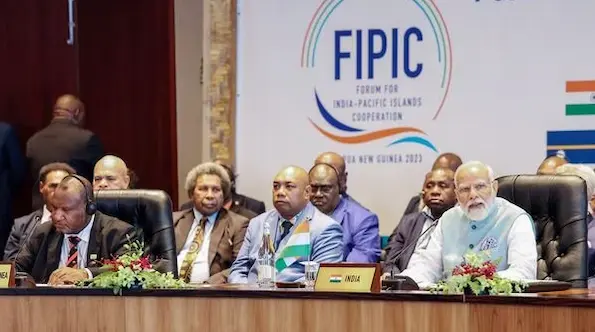
Why in News?
India hosted a high-level meeting of foreign ministers from Pacific Island nations during the FIPIC summit in New York, reaffirming its strategic and diplomatic outreach under the Act East Policy.
About FIPIC
stablishment & Background
- Launched in 2014 by PM Narendra Modi during his visit to Fiji
- A part of India’s broader Act East Policy
- Aims to strengthen India-Pacific Islands relations through development cooperation and diplomatic engagement
Member Countries (14 Pacific Island Countries)
- Cook Islands
- Fiji
- Kiribati
- Marshall Islands
- Micronesia
- Nauru
- Niue
- Palau
- Papua New Guinea
- Samoa
- Solomon Islands
- Tonga
- Tuvalu
- Vanuatu
Objectives of FIPIC
- Enhance cooperation in:
- Trade & Investment
- Renewable Energy
- Health & Education
- Agriculture & Food Security
- Disaster Risk Management
- Climate Change Adaptation
- Digital Connectivity
- Maritime Security
- Space Technology and Capacity Building
Key Initiatives & Outcomes
- $1 million Climate Adaptation Fund for PICs
- Launch of Pan-Pacific Islands e-Network for digital cooperation
- Visa-on-arrival for Pacific nationals visiting India
- Training programs for diplomats and public officials from PICs
- Expansion of space cooperation and healthcare partnerships
Trade Snapshot
- Total Bilateral Trade: ~$300 million
- Exports from India: $200 million
- Imports from PICs: $100 million
- Potential areas for trade expansion: marine products, renewable tech, digital services
Strategic Significance of FIPIC
- Countering China’s Influence:
- China has made inroads through aid, infrastructure, and debt diplomacy.
- FIPIC gives India a soft power platform to balance Beijing’s dominance in the Indo-Pacific.
- Maritime Governance & EEZs:
- PICs control large Exclusive Economic Zones (EEZs) vital for maritime security and marine resources.
- Strengthens India’s blue economy diplomacy and freedom of navigation objectives.
- Climate Diplomacy:
- PICs are among the most vulnerable nations to climate change.
- India’s cooperation enhances its credibility in global climate negotiations.
- Voting Bloc in Global Forums:
- PICs often vote together in the UN and multilateral bodies.
- Strengthening ties amplifies India’s voice on global platforms.
Exam Connect – Possible Questions
Prelims
1. The Forum for India-Pacific Islands Cooperation (FIPIC) includes how many Pacific Island countries?
A. 7
B. 10
C. 14
D. 18
Answer: C. 14
2. Which of the following is not an area of cooperation under the FIPIC initiative?
A. Disaster risk management
B. Climate adaptation
C. Nuclear energy development
D. Digital connectivity
Answer: C. Nuclear energy development
Mains
1. How does India’s engagement with Pacific Island countries through FIPIC serve its strategic interests in the Indo-Pacific region? (150 words)
2. Critically evaluate the role of small island nations like those in FIPIC in shaping global climate negotiations. What role can India play in enhancing their capacity to tackle climate change? (250 words)
4. Central Consumer Protection Authority (CCPA) and Misleading E-Commerce Practices – Governance

Why in News?
The Central Consumer Protection Authority (CCPA) has imposed a penalty of ₹2,00,000 on FirstCry, a leading e-commerce platform for children’s products, for misleading pricing practices—violating provisions of the Consumer Protection Act, 2019 and the E-Commerce Rules, 2020.
What Happened?
- Nature of Violation:
- Products were advertised with the statement “MRP inclusive of all taxes”
- However, additional GST was charged at checkout, which reduced the actual discount
- Example:
- Product showed a 27% discount, but after GST, the effective discount was only 18.2%
- This falls under misleading advertisements (Section 2(28)) and unfair trade practices (Section 2(47)) of the Consumer Protection Act, 2019
Dark Patterns and “Drip Pricing”
- The practice was labeled as “Drip Pricing”
- A dark pattern where the final price is not revealed upfront and is only disclosed at the end of the transaction
- Violates:
- Rule 7(1)(e) of the Consumer Protection (E-Commerce) Rules, 2020
- Guidelines for Prevention and Regulation of Dark Patterns, 2023
About Central Consumer Protection Authority (CCPA)
Established:
- Under Section 10 of the Consumer Protection Act, 2019
- Came into effect on 20th July 2020
- Functions under the Ministry of Consumer Affairs, Food & Public Distribution
Composition:
- Chief Commissioner
- Two Commissioners (Goods & Services)
Key Functions:
- Protect consumer rights against unfair trade practices and misleading ads
- Conduct investigations and inquiries
- Initiate class-action suits in consumer interests
- Issue orders for product recalls, refunds, and discontinuation of misleading advertisements
Legal Framework Involved
| Provision | Key Content |
|---|---|
| Section 2(28) | Defines misleading advertisement |
| Section 2(47) | Defines unfair trade practices |
| Rule 7(1)(e), E-Commerce Rules | Mandates disclosure of total price including all charges |
| Dark Patterns Guidelines, 2023 | Prohibit manipulative user interface tactics like drip pricing |
Exam Connect – Possible Questions
Prelims
1. The Central Consumer Protection Authority (CCPA) was established under which of the following legislations?
A. Consumer Protection Act, 1986
B. Consumer Protection Act, 2019
C. Competition Act, 2002
D. E-Commerce Regulation Act, 2020
Answer: B. Consumer Protection Act, 2019
2. The term “drip pricing”, recently seen in news, refers to:
A. Pricing of essential drugs by pharma companies
B. Offering subsidies through direct benefit transfer
C. Disclosing the final price of a product only at checkout
D. Charging different prices to different customers
Answer: C. Disclosing the final price of a product only at checkout
Mains
1. What is the significance of the Central Consumer Protection Authority (CCPA) in ensuring transparency and fairness in digital commerce? Discuss with recent examples. (150 words)
2. With the rise of e-commerce platforms, misleading advertisements and dark patterns have become a serious concern. Examine the regulatory response of India and suggest measures for effective consumer protection. (250 words)
5. Planetary Boundaries & Planetary Health Check (PHC) 2025 – Environment
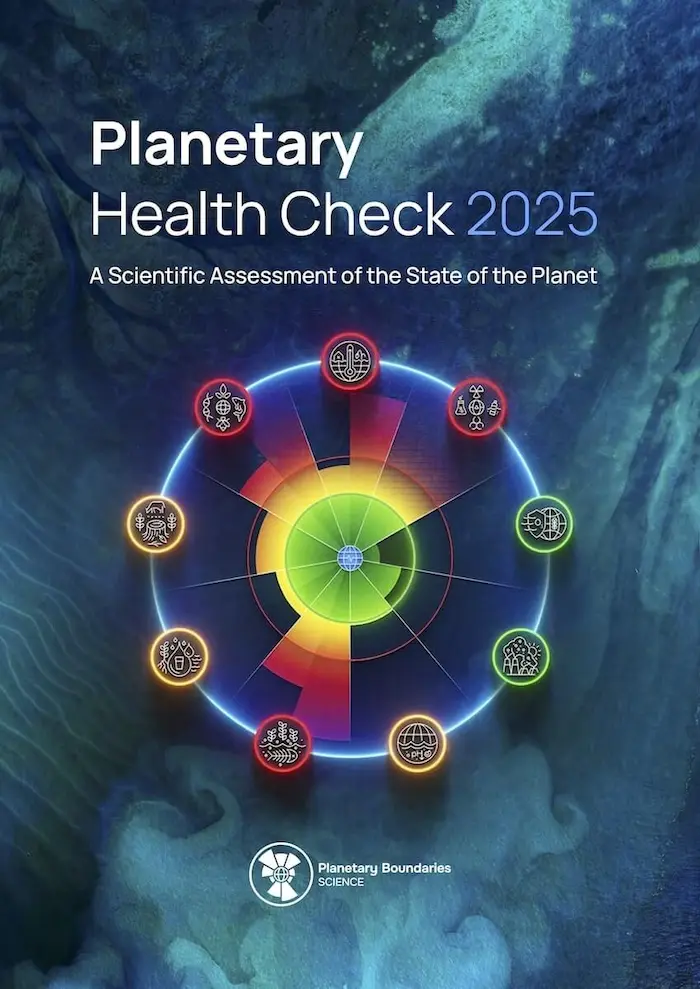
Why in News?
The Planetary Health Check (PHC) 2025 report has raised serious concerns, stating that 7 out of 9 planetary boundaries have been breached, threatening the Earth’s habitability for the first time in over 11,000 years (since the Holocene epoch).
What are Planetary Boundaries?
- Introduced in 2009 by a team of scientists led by Johan Rockström
- Defines nine ecological thresholds within which humanity can safely operate
- Crossing these boundaries risks irreversible environmental collapse, affecting climate, biodiversity, water cycles, and food systems
What is the Planetary Health Check (PHC)?
- A global scientific assessment tracking the health of Earth’s life-support systems
- Evaluates how human activities are pushing the planet beyond safe ecological thresholds
- Warns of growing planetary instability due to:
- Fossil fuel combustion
- Deforestation
- Unsustainable agriculture
- Plastic and chemical pollution
The 9 Planetary Boundaries & Their Current Status
| Boundary | Status (2025) | Key Concerns |
|---|---|---|
| 1. Climate Change | Breached | CO₂ at 423 ppm (safe: 350 ppm); radiative forcing at +2.97 W/m² (safe: +1.5 W/m²) |
| 2. Biosphere Integrity | Breached | Extinction rate: 100 E/MSY (safe: 10); biodiversity decline continues |
| 3. Land-System Change | Breached | Forest cover reduced to 59% (safe: ~75%) |
| 4. Freshwater Change | Breached | Soil moisture and streamflow significantly altered |
| 5. Biogeochemical Flows (N & P cycles) | Breached | Agricultural overuse of nitrogen & phosphorus → dead zones, eutrophication |
| 6. Ocean Acidification | Breached | Acidity ↑ 30–40% since industrial era, harming marine life |
| 7. Novel Entities (e.g., Plastics, Synthetic Chemicals) | Breached | Pollution from persistent chemicals and plastics exceeds safety levels |
| 8. Atmospheric Aerosol Loading | Not Breached Yet | AOD at 0.063 (safe: 0.10); still harms health |
| 9. Stratospheric Ozone Depletion | Not Breached | Ozone recovering post-Montreal Protocol; new risks from rockets & space debris |
Associated Concern: Sixth Mass Extinction
- Refers to the accelerated loss of species due to:
- Overexploitation of resources
- Habitat destruction
- Pollution
- Climate change
- Considered by many scientists as the sixth major extinction event in Earth’s history
Exam Connect – Possible Questions
Prelims
1. Who introduced the concept of “Planetary Boundaries”?
A. IPCC
B. UNFCCC
C. Johan Rockström and team of scientists
D. Stockholm+50 Summit
Answer: C. Johan Rockström and team of scientists
2. Which of the following is not one of the nine planetary boundaries?
A. Ocean acidification
B. Biodiversity loss
C. Deforestation
D. Urban population growth
Answer: D. Urban population growth
Mains
1. What is the significance of the Planetary Boundaries framework in addressing global environmental governance? Highlight India’s policy responses in relation to at least three breached boundaries. (150 words)
2. The 2025 Planetary Health Check warns that the Earth is crossing multiple ecological thresholds. Examine the implications of breaching these boundaries for global sustainability. Suggest policy-level interventions for course correction. (250 words)
6. India–EU Strategic Agenda – International Relations
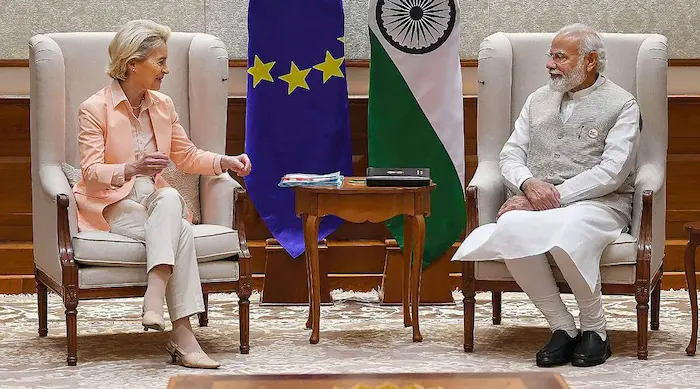
Why in News?
The India–EU strategic relationship is witnessing renewed momentum as the EU positions itself as a stable and dependable partner for India, especially in light of global shifts in foreign policy. The India–EU Leaders’ Summit, scheduled for February 2026, will build upon ongoing strategic engagements, including the 2022 visit by European Commission President Ursula von der Leyen.
Background: India–EU Relations
- EU is India’s largest trading partner
- Relations have evolved beyond trade, covering technology, security, connectivity, and geopolitical cooperation
- In response to changing US foreign policy (notably under President Trump), the EU seeks strategic autonomy and deeper ties with India, especially in the Indo-Pacific region
Five Pillars of the India–EU Strategic Agenda
- Prosperity and Sustainability
- Focus on trade, investment, sustainable growth, and resilient supply chains
- Bilateral trade in goods reached €120 billion in 2024 (90% growth over a decade)
- Free Trade Agreement (FTA) under negotiation to remove trade barriers
- Technology and Innovation
- Joint research in critical technologies (e.g., AI, quantum, green tech)
- Planned EU–India Innovation Hubs
- Focus on digital sovereignty and data governance
- Security and Defence
- Strategic dialogues on counterterrorism, cyber security, and Indo-Pacific stability
- Possible agreements on intelligence sharing and joint operations
- Connectivity and Global Issues
- India and EU to work on:
- Global Gateway initiative (EU)
- MAHASAGAR programme (India)
- India–Middle East–Europe Economic Corridor (IMEC)
- Cooperation in multilateral platforms, climate action, and third-country development
- India and EU to work on:
- Enablers Across Pillars
- Promoting mobility of professionals, academic collaboration, and cultural exchanges
- Strengthening institutional and people-to-people ties
Strategic Importance
- Economic: EU is a critical market for Indian exports and FDI
- Geopolitical: Shared interest in rules-based international order and countering China’s assertiveness
- Technology: India–EU collaboration on AI, semiconductors, and cyber norms promotes technological sovereignty
- Climate Diplomacy: Joint action on climate targets and green energy transition
Exam Connect – Possible Questions
Prelims
1. The India–EU Strategic Agenda is built on how many key pillars?
A. 3
B. 4
C. 5
D. 6
Answer: C. 5
2. Which of the following initiatives is aimed at enhancing connectivity between India, Europe, and the Middle East?
A. Belt and Road Initiative
B. Global Gateway
C. IMEC (India–Middle East–Europe Economic Corridor)
D. ACT East Infrastructure Plan
Answer: C. IMEC
Mains
1. The European Union is emerging as a strategic partner for India in a multipolar world. Examine the key areas of cooperation and challenges in the evolving India–EU relationship. (150 words)
2. Evaluate the potential of the India–EU Free Trade Agreement (FTA) in strengthening economic ties. What are the likely benefits and roadblocks in achieving a balanced trade partnership? (250 words)

